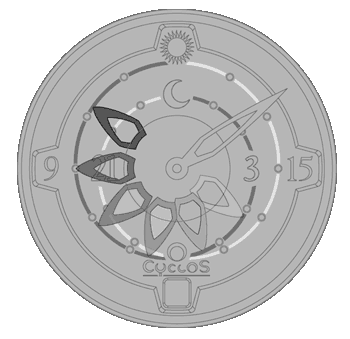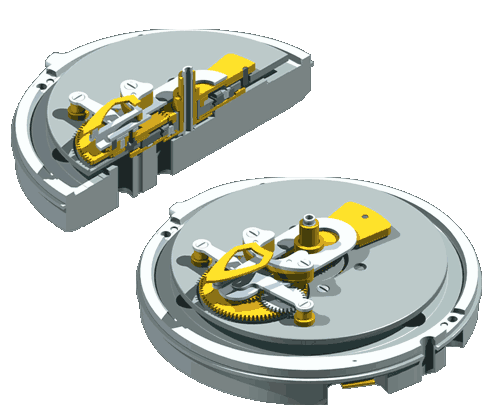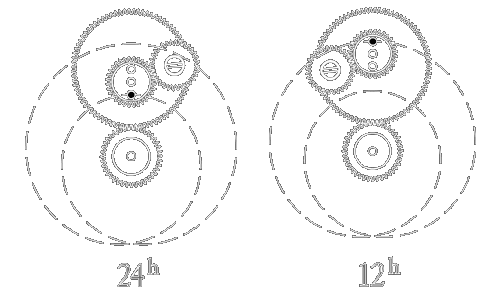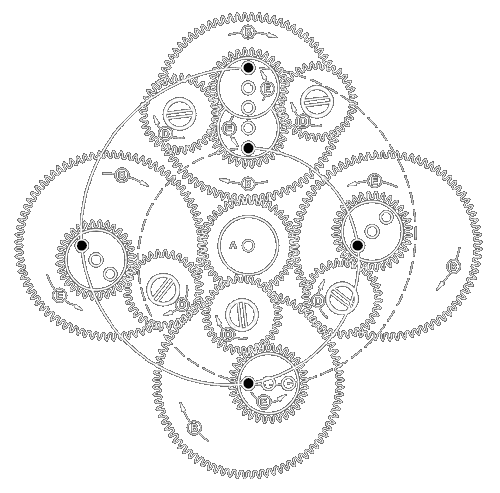|
IDEA AND ITS HISTORY In 1989 the architect and designer John C. Ermel, working on an order for a new watch design, had the idea of making the difference between the cycles of day and night obvious. This could be achieved by using a radially adjustable hour hand. He arranged the scale of hours on a so-called "Pascal’s spiral”, a conchoid of a circle, a special cycloid achieved by overlapping the usual clockwise rotation with translation in the radial direction – in this case a sine curve with a cycle of 24 hours. |

|
|
|

|
|
The CYCLOS DualPhase module The visible hour hand is mounted on a finger, which is attached to a radially adjustable arm beneath the dial. In the cutaway view the gilded brass gearwheels A, B, C and E are visible underneath the arm (light-gray). The dark-grey pin in the left foreground located in gearwheel E guiding the arm is the guide pin F. |

|
|
The gearwheels A, B, D and E at 12h midnight and at 12h noon |
 |
|
Simultaneous representation of 5 positions of the gearwheels A, B, D and E, namely at 24h/0h, 3h, 6h, 9h and 12h, which is synonymous with "ante meridian". Gearwheel A in the centre remains fixed, gearwheel B is twice as large and turns around A once every 12 hours and rotates 540° around itself during the same time period. Gearwheels D and E are mounted on bearings on B so that they can rotate and, in conjunction with other hidden gearwheels, correct the parallel axis. The Pascal spiral, which can be described mathematically by the formula The two initially available collections indicate two phases in the course of the 24-hour day in different ways:
|








